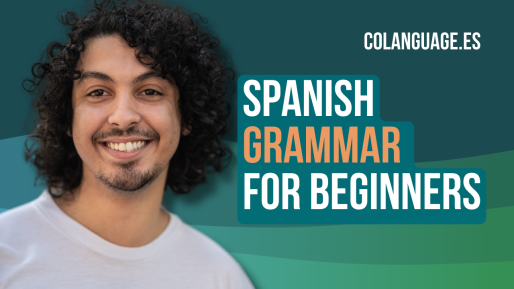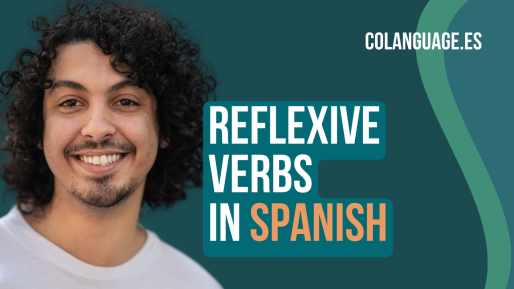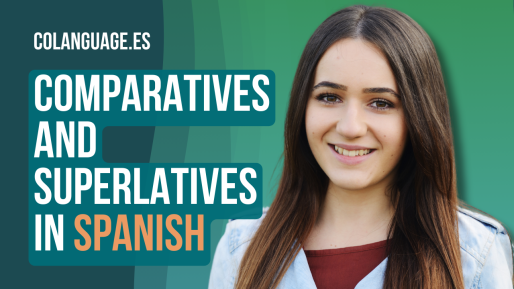Negation and negatives in Spanish (no, never, nothing, not)
Spanish
Hi and welcome! In this lesson, we are going to learn how to create negative statements and phrases in Spanish.
Video
Podcast
What are negation words?
In this lesson, we are going to learn how to make negative statements in Spanish. Let’s see some examples:
-
Nunca he estado en Japón. (I have never been to Japan.)
-
No veo nada. (I don't see anything.)
-
No hay nadie en la fiesta. (There is nobody at the party.)
"No" or "not" in Spanish: positioning of "no" in a sentence
In Spanish, we usually add the word "no" before the verb to make negative sentences. It translates to "no" or "not" in English.
If a sentence includes a subject, place "no" between the subject and the verb.
| Spanish | English |
|---|---|
| No canté. | I didn't sing. |
| Mi hermano no sabe pintar. | My brother can't paint. |
| ¿Quieres un café? - No, no quiero café. | Would you like some coffee? - No, I don't want any coffee. |
| Aún no. | Not yet. |
| Ahora no. | Not now. |
The following sentence includes a reflexive verb, so "no" is placed before the pronoun.
No me gusta correr cuando lueve. (I don’t like to run when it rains.)"
"Nadie" in Spanish: Nobody, anyone, no one
This table shows how to use "nobody" , "no one" and "anyone" in a Spanish sentence.
| Spanish | English |
|---|---|
| Nadie vino a la fiesta. | Nobody came to the party. |
| Nadie sabe dónde dejé mis llaves. | Nobody knows where I left my keys. |
It is common to use a double negation in Spanish. Notice how the verb is placed in between the two negation words. For example:
No conozco a nadie. (I don't know anyone.)
No vieron a nadie. (They didn't see anyone.)
"Nada" in Spanish: Nothing, none, anything
The following sentences are examples of how to correctly use the Spanish negation "nada" in a sentence.
| Spanish | English |
|---|---|
| Él dijo que nada lo haría cambiar de opinión. | He said nothing would change his mind. |
| Nada de lo que ocurra nos separará. | Nothing that happens will keep us apart. |
| No tengo nada que hacer hoy. | I don't have anything to do today. |
| Él no sabe nada sobre el tema. | He doesn't know anything about the topic. |
"Nunca" in Spanish: Never
This table contains examples of how to use the negation "never" in Spanish.
| Spanish | English |
|---|---|
| Él nunca llega tarde. | He never arrives late. |
| Mi hermano nunca come verduras. | My brother never eats vegetables. |
| No lo haré nunca más. | I will never do it again. |
| No pensamos que esto pasaría nunca. | We didn't think that this would ever happen. |
"Nunca" can be placed at different positions in a sentence.
Nunca voy al cine. (I never go to the cinema.)before the noun
No voy nunca al cine. (I never go to the cinema.) the two negation words are placed around the noun
Expressions and double negatives in Spanish
In this final table, we are going to learn some frequently used expressions to indicate negation, as well as double negatives.
In Spanish, "no" can be combined in a double negation with other negative words, such as "never", "nothing", "nobody", and many more.
| Negation | Spanish | English |
|---|---|---|
| No... jamás (never) | No lo veré jamás. | I will never see it. |
|
No... tampoco (neither) |
No me gusta nadar y a mi hermano tampoco. | I don't like swimming and neither does my brother. |
| No... ni... ni (either, or) |
No conozco ni a tu madre ni a tu padre. | I don't know either your mother or your father. |
| No... más (anymore) | No quiero verte más. | I don't want to see you anymore. |
| No... ningún (any) | No conocemos ningún restaurante bueno. | We don't know any good restaurant. |
Key takeaways
Here is a quick summary of this lesson.
- To make negative sentences, you add the word "no" before the verb.
- If there is a pronoun in the sentence, "no" is placed before the pronoun.
- It is common to use a double negation in Spanish. The verb is placed in between the two negation words.
- There are several negation words, that "no" can be combined with.
Important! Practise this lesson with a teacher.
We recommend to complement our free lessons with one of our teachers in conversation lessons. We offer both private and group lessons.
Subscribe to our social media channels to get free daily exercises!


